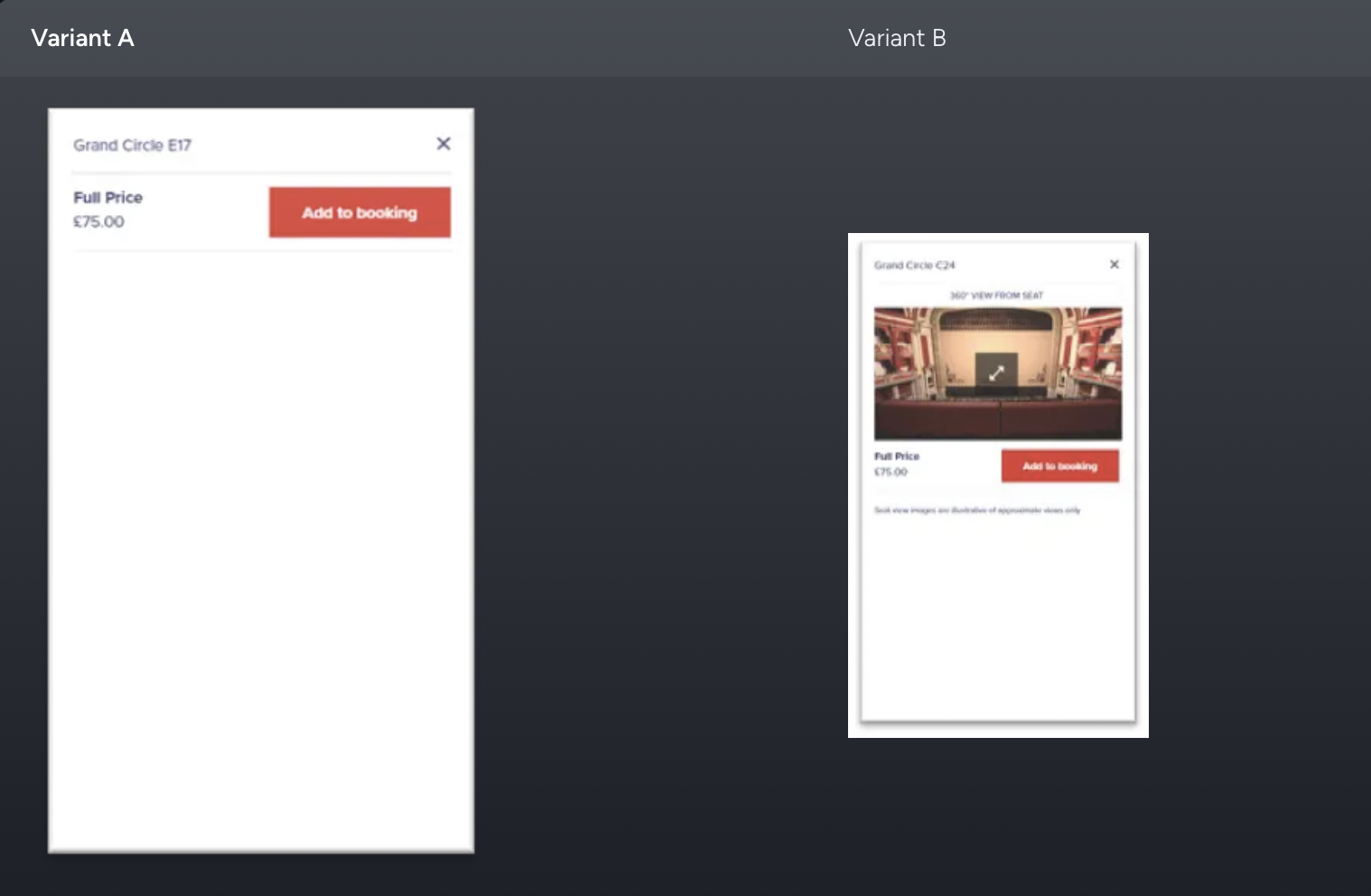Five best A/B testing tools for product managers in 2024
Treating experimentation as an afterthought is a mistake. Because what if the wrong idea was built from the start? For success, you need to integrate A/B testing into your product development process. See how.


Imagine walking through a dark forest without a compass. That's product development without A/B testing.
And often, experimentation is seen or used as a final step to validate decisions.
Research gets completed. Ideas get built. Everything is set up for launch.
Only then tested.
However, treating experimentation as an afterthought is a critical mistake. Because what if the wrong idea was built from the start?
In 2024, you need to integrate A/B testing into your product development process.
Today, see the best A/B testing tools and how to integrate them, in your ideation to post-launch process.
Why is A/B testing important in product development?
Product managers, we've all been there:
- Pressure to launch
- Knot in your stomach
- Imposter syndrome on steroids
You're 100% not alone. But "Ship fast and break things" is so 2010. No one loves a bad product. You need to do better and for that you need experimentation.
Here's why:
- Real-world feedback trumps assumptions
- Chance to prioritize features that'll move the needle
- Helps you roll out features/products without risks
So, you need to introduce experimentation early in the development process.
Experiment Nation
Testing your hypotheses early on in the ideation space can make space for bigger and better ideas.
You can avoid assumptions about what matters. Like:
- Who the target users are
- Their needs and pain points
- What value they will get
The magic happens when you embrace experimentation across the digital product lifecycle.
Blueprint to launch: A/B testing the product lifecycle
No, experimentation isn't just for tweaking button colors. During the entire product development lifecycle, it'll help you prove ideas before developing, prioritize the best ones (saves you from building stuff no one wants), and deliver without risks.

Tests to run at each stage of the product development lifecycle:
Ideation and research
- Painted door tests: Test demand without actually building a product.
- Validating MVPs: Don't go all-in on your guesses. Test the bare bones first.
- Qualitative research: Get in your customers' heads. What will make them want to use your new idea?
- Exploratory A/B testing: Throw ideas at the wall. See what sticks and eliminate what doesn't work.
Example: Dropbox's famous MVP video. They A/B tested a simple explainer video before writing a single line of code.
Design and prototyping
- Frequent small releases: Launch as a "beta" or "early access." Create an exclusive feedback channel.
- Feature flagging: Toggle features on/off at will.
- Staged rollouts: Test with a small group first.
- Safe rollbacks: Oops button for when things go south. Because they will.
Example: Instagram gradually rolled out 'Add notes to reels and feed posts' recently. They tested, tweaked, and expanded slowly.
Development
- Feature validation: Do the beta testers actually use the product? Or do they just seem confused?
- Multivariate tests: When two options aren't enough. Test multiple variations at once.
- Measuring business impact: Show me the money. How's this affecting the bottom line?
Example: Netflix's personalized thumbnails. They A/B test everything to keep you binging.
Launch and adoption
- Marketing and promotion: Share the product roadmap and invite input
- Understanding audiences: Acknowledge known issues in release notes
- Growth and onboarding: Host live Q&A sessions with the product team
Remember, for a smooth, high-quality launch, you need to constantly support a launch till the adoption goals.
Align leadership to a phased launch, defining each phase, target audiences, learning objectives, and key metrics. Then, gather insights at every phase, prioritize feedback into blockers, needs, and non-essentials, and focus on the blockers to progress.
Test + Learn: Experimentation
Top five A/B testing tools for product managers
Here are five tools you should consider:
-
Optimizely
Optimizely Feature Experimentation tool gives you the enterprise-grade power to deliver products with more control and impact.- Pros: Robust feature set, advanced targeting, integrations galore.
- Cons: Wallet-friendly? Not so much.
-
VWO
VWO does most things well, especially for mid-level testing programs.- Pros: User-friendly interface and solid analytics.
- Cons: It can get pricey as you scale. Some advanced features have a learning curve.
-
Split
Split is built for the modern product team and focused on connecting rollouts to customer data.- Pros: Feature flagging is top-notch. Great for gradual rollouts.
- Cons: Too dev-focused for some. UI could be better.
-
LaunchDarkly
Feature flagging focused tool. LaunchDarkly is perfect for cautious launchers.- Pros: Granular control over features. Ideal for complex products.
- Cons: Not a full-stack A/B testing solution. Prepare for some integration work.
-
Kameleoon
Kameleoon will help you turn releases into actionable experiments.- Pros: Better AI-driven insights, easy to use.
- Cons: Newer player, so community support is still growing.
Don't focus on the features you'll never touch. Pick the tool that fits your workflow, your team, and most importantly, your budget.
Real-world 'A/B testing in product development' use cases
Here are two use cases showing how real businesses leveraged A/B testing ideas to gain control over how they delivered a new feature.
Quip boosts subscription value
Quip, a leading brand in the oral healthcare space, faced the challenge of improving customer lifetime value (CLV) through its subscription model. They wanted customers to purchase more refillable products.
The company used feature flags to test adding a quantity selector for refills earlier in the checkout process. Quip was able to validate their hypothesis without risking a full rollout. The new PDP variant with the quantity selector proved successful, leading to increased conversion rates and higher subscription values by providing more options upfront.
Test run
Product Detail Page (PDP) optimization test
- Original version: Standard PDP without refill quantity selector
- New version: PDP with refill quantity selector added
Key results
- 4.7% Increase in order conversion rate
- Significant increase in purchase units per transaction
- Boost in subscription units per transaction for brush head refills
ATG boosts checkout conversion by 10%
Ambassador Theatre Group (ATG) wanted more visitors to book tickets on their first visit. They identified a significant drop-off rate during the seat selection process, reaching as high as 82%.
ATG used feature flags to test changes in the seat selection step, allowing for quick rollbacks if needed. Overall, this simplified the seat selection process on mobile devices.
Test run
Mobile seat selection optimization
- Original version: Cluttered screen with summary details always visible
- New version: Hidden summary details before seat selection, more screen space for seat map

Key results
- Over 10% increase in overall checkout conversion
- Significant decrease in drop-off rates via mobile devices
Three takeaways
Integrating A/B testing throughout your product lifecycle isn't just smart—it's essential. From ideation to post-launch, it's about validating ideas, prioritizing features, and launching with confidence.
Three takeaways to keep you going:
- Don't wait until launch to validate your ideas. Only build features and products that you know are going to be adopted.
- Pick a tool that fits your team's needs and budget.
- Make testing a habit, not a chore. Celebrate failures as learning opportunities and keep iterating.
Ready to level up your experimentation game? Dive deeper into implementing testing earlier in your process with this product experimentation guide.
![]()

